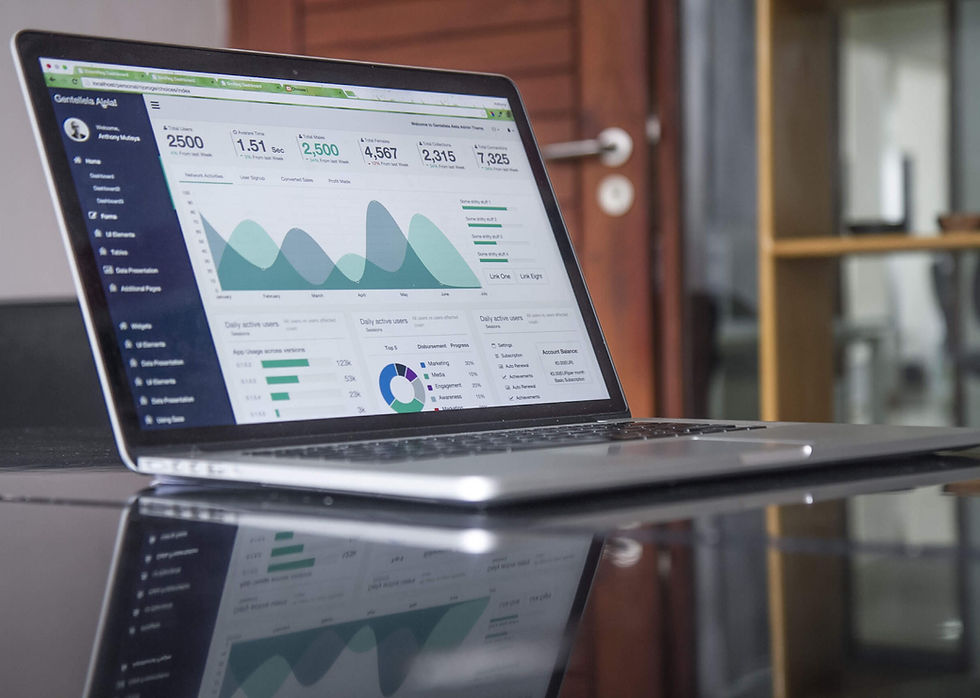Bridging the Gap: Syndromic Surveillance in Healthcare Delivery and Public Health
- aajahestavillo
- Nov 16, 2024
- 3 min read
The nexus between healthcare delivery and public health is a crucial focal point in today's interconnected world. Syndromic surveillance has emerged as a pivotal instrument in bridging this gap, offering early warning mechanisms to swiftly detect and monitor health events. Join me as we explore how this innovative approach is transforming our response to epidemics and pandemics, with a particular focus on the surveillance systems employed by the Centers for Disease Control and Prevention (CDC).
Inquiring minds want to know: What is Syndromic Surveillance?
Think of syndromic surveillance as a high-tech health detective. Instead of waiting for a confirmed diagnosis, it tracks symptoms like fevers, coughs, and sneezes—kind of like playing Sherlock Holmes but with germs! Public health officials use this method to spot potential outbreaks before they spiral out of control. It’s especially useful during pandemics or when new diseases emerge, giving us a head start in the race against time.
In other words, it’s like spying on illnesses instead of people. Imagine being a detective who solves mysteries using sniffles and sore throats instead of fingerprints and clues! Pretty cool, right?
CSI: Contagion Surveillance Investigation - How Does It Work?
Ever wondered how our health detectives crack the case of sneaky diseases? Well, grab your magnifying glass and follow along! Here's a visual play-by-play of how syndromic surveillance goes from spotting a sniffle to saving the day. It's like a medical relay race, but we're passing data instead of batons!

(timeline created using Perplexity AI)
NSSP: The CDC's Health Threat Radar System
Curious about how the CDC stays ahead of potential health threats? Meet the National Syndromic Surveillance Program (NSSP), the CDC's high-tech health threat detection system. This digital superhero may not wear a cape, but it scans millions of health records daily to spot potential outbreaks faster than you can say "achoo!"
Key features of the NSSP include:
BioSense Platform: A cloud-based system for early detection and monitoring
NSSP Community of Practice: A virtual hub for public health professionals
Technical Assistance: Support for onboarding and implementation
Real-time Data Processing: Analyzes over 9.6 million electronic health messages daily.
Rapid Response: Provides data within 24 hours of a patient’s emergency visit.
Widespread Coverage: Gathers data from over 6,900 healthcare facilities nationwide.
Privacy Protection: Utilizes de-identified data to safeguard patient privacy.
Multi-source Integration: Combines data from EDs, labs, and other sources.
Syndromic Surveillance: The Unsung Hero of the COVID-19 Pandemic
During the recent coronavirus outbreak, syndromic surveillance was as a vital tool for tracking the spread of the virus and guiding public health responses. The capabilities of the National Syndromic Surveillance Program (NSSP) were effectively utilized to:
Monitor Emergency Department Visits: By tracking symptoms associated with COVID-19, public health officials could identify potential hotspots before testing confirmed cases (Centers for Disease Control and Prevention [CDC], n.d.).
Validate Data: Mortality data integrated into the NSSP system provided early insights into unexpected rises in deaths, helping to validate other data sources (CDC, n.d.).
Inform Policy Decisions: The near real-time data provided by syndromic surveillance systems helped policymakers make informed decisions about public health measures (CDC, n.d.).
The efforts of syndromic surveillance enhanced our understanding of COVID-19's impact and facilitated proactive measures to protect public health.
Beyond COVID-19: A Versatile Tool for Ongoing Health Challenges
Syndromic surveillance continues to be a valuable tool for various health threats. It has been used effectively for:
Flu outbreak detection
Opioid overdose monitoring
Zika virus tracking
E-cigarette or vaping product use-associated lung injury surveillance
The Digital Bridge: Connecting Healthcare and Public Health
As we look to the future, promising information systems and technologies are emerging to strengthen the connection between healthcare delivery and public health. Cloud-based platforms that facilitate real-time data sharing between hospitals, clinics, and public health agencies are at the forefront of this digital revolution. These systems enable seamless integration of electronic health records, laboratory results, and syndromic data, providing a comprehensive view of population health (CDC, 2023).
Artificial intelligence and machine learning algorithms are also playing an increasingly important role, helping to analyze vast amounts of data and identify patterns that might escape human detection (Olawade, 2023). Additionally, blockchain technology shows potential for secure and transparent data sharing, while maintaining patient privacy.
As these technologies continue to evolve, they promise to create a more responsive, efficient, and interconnected health ecosystem. By bridging the gap between individual patient care and population-level health monitoring, we can build a healthier future for all.
References
Centers for Disease Control and Prevention. (2023, July 3). Artificial intelligence and machine learning. Public Health Surveillance and Data. https://www.cdc.gov/surveillance/data-modernization/technologies/ai-ml.html
Centers for Disease Control and Prevention. (n.d.). Mortality data integrated into syndromic surveillance system. National Syndromic Surveillance Program (NSSP). https://www.cdc.gov/nssp/php/partnerships/data-improves-public-health-surveillance.html
Olawade, D. B., Wada, O.J., David-Olawade, A. C., Kunonga, E., Abaire, O., & Ling, J. (2023). Using artificial intelligence to improve public health: a narrative review. Frontiers in Public Health. doi: 10.3389/fpubh.2023.1196397




Commenti